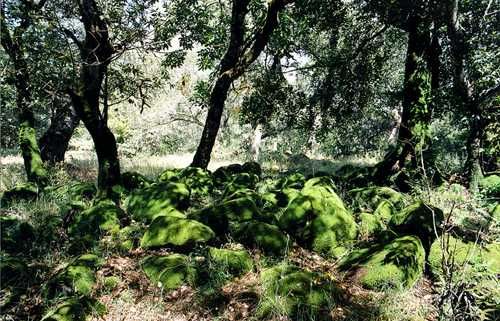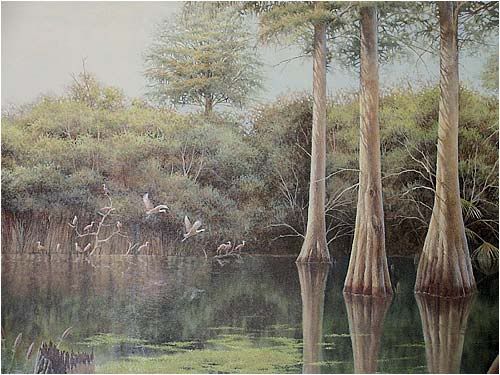Shangia

| |
| Flag of Shangia | |
| Motto: We Are Tiny People | |
| [Map URL], or No Map Available Yet | |
| Region | San Gabriel Valley |
|---|---|
| Capital | Shanghuang National Forest |
| Official Language(s) | Shangian, Eosimian, English |
| Leader | Alpha Male Shinooki |
| Population | 3.197 billion |
| Currency | Seeds |
| NS Sunset XML | |
Shangia is a past tech nation. In fact it is very past tech in that the nation exists in the year 42 million BC. That is the time of the Shangians ancestors.
Contents
Natural Environment
Natural Environment: Shangia's terrain is entirely composed of tropical rainforest. In the east is Lake T'ai. In the north lays the Yangzte River. There are no large primate species here, but up to 16 different species of tiny primate competing in the same area.


People
People: The Shangians are tiny primates the size of the average human thumb. Each shangian foot is the size of a grain of sand. They walk on all fours and often leap from tree to tree. They were night creatures and very solitary. They had no time for useless socializing. They live in trees. Shangians have a very fast metabolism. They eat insects, fruit, nectar. They constantly live in fear of owls, who prey upon and eat unsuspecting Shangians.
Picture of Eosimias (only slightly bigger than Shangian):

Government
Government: No government, no political parties, no politics at all in fact. Shangian have no knowledge of politics.
Religion
Religions: There are no religions in Shangia. Shangians sometimes aren't even aware of their own existence, cause they are having so much fun hunting and consuming insects such as cockroaches, ants, grasshoppers, flies, etc.
Military
Military:Shangians have no military.
Ethnic Groups
Ethnic groups: Shangians, Omamyidae, Eosimians, Shoshonius, telanthropoids, haplorphines, tarsiidae. The Eosimians immediately broke off to make their own nation, right after the consolidation of Shangia into a nation.
Local Fauna
The fauna of Shangia are creatures that were around during the mid Eocene Epoch.

- They included:
- Uintatherium=ancient, distant cousin of horses, elephants and whales
10 -15 feet long and lived in North America and Asia Largest plant eater of in its time. It was small brained like the dinosaurs. Photo of Uintatherium:
2. Eobasileus cornuta =(horned dawn king)=rhino size, has saber canines, 6 bony knobs on its face, closely related to Uintatherium but a distinct animal.
3. The two birds in the photo above are Diatrymas. Six foot meat eating flightless bird which have been clocked at 45 miles an hour. Stout nine inch beak. Also called the "terror crane".
4.Mesonychids: Most mesonychids are the size and shape of large wolves or bears, although some are as small as foxes. Heavy robust skull armed with sharp canine teeth and huge round-cusped molar teeth, suitable not only for eating meat but also for crushing bone. The body is also very wolflike, with a long tail and limbs. Like many rl modern carnivores, mesonychids walk on the tips of their long toes, rather than flat-footed. Despite all these carnivorous adaptations, however, mesonychids are descended from hoofed mammals. The proof is in their toes, which have hooves rather than claws.
They prefer dense forests. They catch their prey by ambushing it. They are not very fast predators and most modern mammals can easily outrun them. However, they are not specialized carnivores.
5.Andrewsarchus: In rl this was a whale ancestor. Four meters long, two meters high at the shoulder, and weighes almost four times as much as the largest known bear. It was carnivorous.
6.Brontotherium= 8 ft high at the shoulder. They are vegetarians who browse on vegetation.
7. Basilosaurus= The most common of the primitive whales. Has a streamlined body that averaged 45 to 70 feet in length. They remind people more of sea serpents than they do modern whales however. The head is five feet long. They use their front teeth to catch their prey. Basilosaurs prefer squid and fish.
They are directly descended from the Mesonychids. They have well-defined incisors, canines, premolars, and multirooted molars. They have vestigial rear legs.

8.Palm trees and alligators, bats, fresh water fish like: Gars, Herring, and Sunfish)
Gars are toothy freshy water fish that have been around since the Cretaceous. With the patience of a sunning snake, they have needle sharp teeth. They eat other fish and sometimes, waterfowl.
They are voracious killing machines: heir hunting tactic is to lie in wait for prey to move close, or they may stalk it slowly. Then they rush in and slash their sharp-toothed “beak” from side to side, killing or injuring the target fish. The prey is then grabbed crosswise in the gar’s teeth and maneuvered in the jaws to be swallowed headfirst. Gars also occasionally feed on crustaceans. Gars are sometimes seen on sunny days, apparently basking, just beneath the water’s surface. Their eggs are poisonous to humans and other animals.

Herring= Maximum size is about 15 inches and less than one pound. Live just off the coast but use fresh water rivers and streams for spawning. They eat zooplankton, shrimp, fish eggs, and small fish.

Sunfish= The males are very territorial at mating time. The male takes care of the eggs. Sunfish are sight-feeders and get their food by lying in wait and making a sudden lunge for it. They eat minnows and crayfish, and organisms that attach themselves to plants and rocks. Some of the most ferocious will go to the surface to grab a meal.

9.cattails grow in the shallows of all freshwater lakes.
10.Heptodon: An ancient tapir, its a vegie eater with a small snout. It lives near lakes.

11. Coryphodon= Short stocky limbs and 5-toed hoofed feet. It has a small brain but its tusks are big. Lives near lakes. Is a vegetarian. Eats roots, tubers and aquatic plants.

12. Ants, cockroaches, fleas, beetles, dragonflies, mosquitos.
13. Hyracotheriums= small horses. Also known as Eophippus, it was the ancestor of the all modern world horses. It is only the size of a small dog. Each foot has three toes. It weighs 15 pounds. And it is vegetarian.

14. Crabs, geese, ducks, herons, owls and hawks.And flowers.
15. Cordylarths= a dog like mammal.
16. Walnut, elm and beech trees.
17. Diacodexis Rabbit-sized with longer limbs. The feet are very elongated, and the 3rd and 4th toes bear the most weight. In fact it has five toes. It can spread its hind limb out to the side. The ankle is reminds one of the modern hippos and pigs (of which it would become the common ancestor).

18. Helohyus= Larger than and similar to Diacodexis but relatively shorter & stouter limbs, with bulbous cusps on the molars.

19. Anthracotherium=dog sized ancestor of the modern hippo.

20. Propalaeochoerus= primitive piglike creature.
21. Homacodon= ancestor of the camel. Similar to Diacodexis.
22. Poebrodon= first camel in the world. Very primitive. A small, short-necked, four-toed animal with little hooves on each toe.
23. Indomeryx= Long- legged runners and bounders, with many primitive features, but with telltale transitional signs: Still 5 toes on front and 4 behind, but the side toes are smaller. Lower canine shaped like an incisor. The bone at the top of the skull is exposed above the skin.
24. Archaeomeryx=primitive rabbit sized creature.

25. Leptomeryx= rabbit sized creature.

26. Prodremotherium= primitive deer like animal.
27. Pakicetus= One of the first Cetaceans (whales). Lived on land and fished in shallow streams. The nostrils are over the incisors.

28. Ambulocetus= a carnivorus whale ancestor. Lived near shore and ambushed their prey in shallow water. Moved agily on both land and in the water. Shangians call them: Death from below.

29. Kutchicetus= whale ancestor. They have large hind limbs, long slender snouts, small eyes, and widely seperated ears. They are no bigger than modern day river otters.

30. Tingamarra Chulpasia= marsupial ancestor of Kangaroos.

31. Alamitophis=carnivorus snake

Resources
Coal, natural gas,, copper, gold, oil.
History
In the course of evolutionary events, life has undergone random mutations. Most of these mutations were deletrious and resulted in the death of the organism. On rare occasions these mutations were beneficial. In 65 millin BC, a large meteor wiped out the dominant life forms, Dinosaurs. Small mammals remained and evolved into modern mammals. Between 45 and 42 million BC, the first primates in the world emerged in China. These creatures were barely the size your thumb. There 16 different species in the same forest directly in competition with each other. The most prominant being the Shanghuang micromonkeys (Shangians), Eosimians, Omamyidae.
In 4 million BC a strange black rectangular monolith appeared in low earth orbit. It is ironic that appearance of this mysterious extraterrestrial object coincided with the discovery of tools by the Shangians.
This is an important junctur as the discovery tools was an important path toward becoming civilized. But by this time, everyone was pretty much walking around with sticks and stones.
